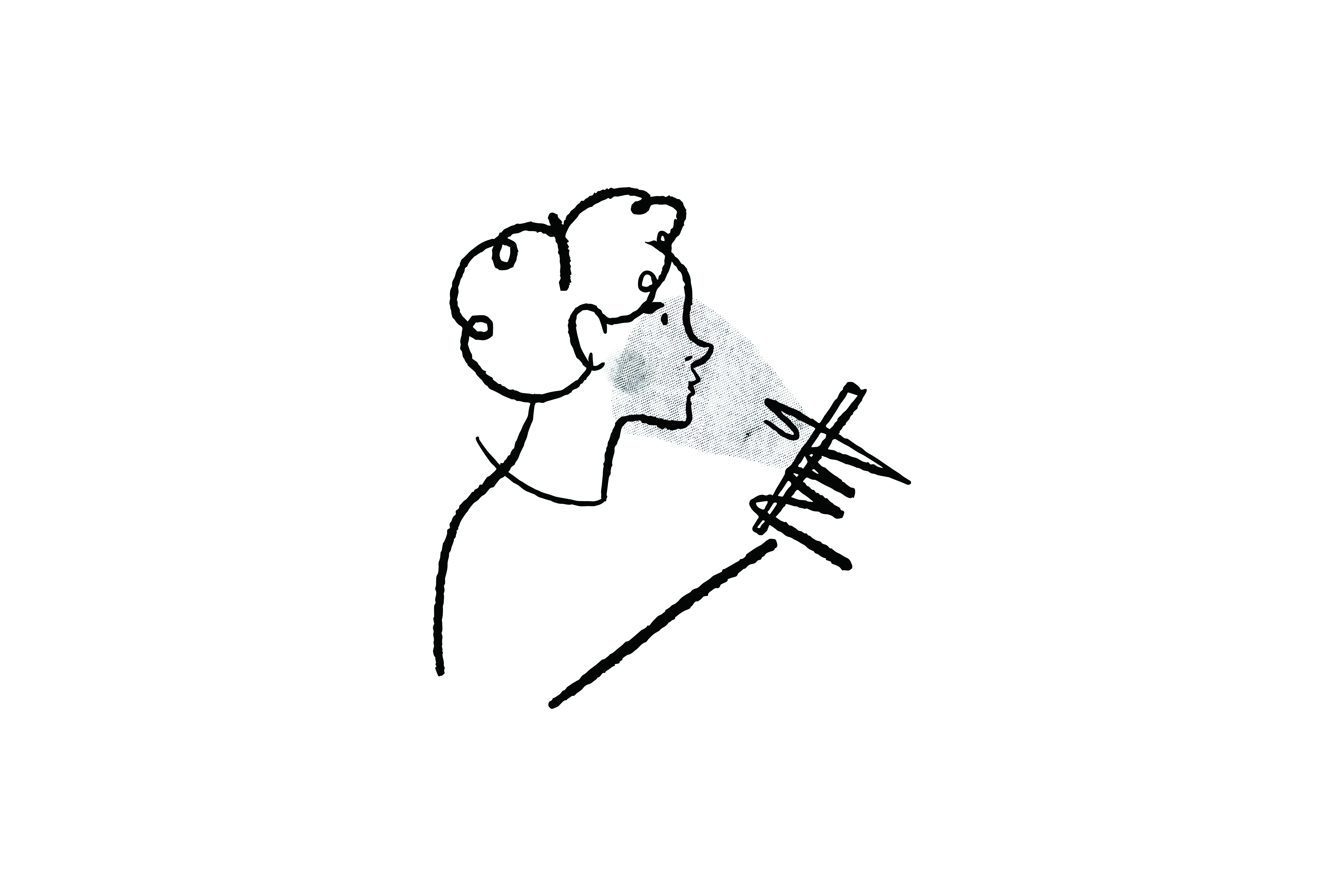Without diminishing the massive suffering experienced by much of the world’s population, I wanted to highlight a silver lining of all of the isolation that many have experienced. Without any doubt, the COVID-19 pandemic has had horrific and tragic consequences for many. I would never try to downplay this. However, as this has been covered in detail by others, I wanted to outline some innovations that have resulted and possible outcomes that aren’t all necessarily negative.

Out of 52 weeks in a year, I might normally spend 10 of them interfacing directly with coffee producers, often far off the grid, slurping soup, walking up and down mountains, taking photos, playing with dogs and kids, etc. Then I might spend another 10 interfacing with roasters outside Colombia, holding cuppings, talking shop for hours on end, answering questions one-on-one about realities on the producer side, and admiring fancy coffee machines. Also, many, many hours in trucks, busses, airports, hotels, and friends’ sofas.
None of that has happened this year. I’ve been stuck inside my apartment in Pereira, Colombia, only twice penetrating a 1-kilometer radius since March. Through March and April, as I updated my CV, sure that I would be out of a job, possibly unable to pay rent within 3 months, I was able to think critically about what really constitutes value in the coffee supply chain. While travel, physical contact, and friendships are often methods and byproducts of the creation or maintenance of value, and perks of the job, they do not constitute value for the end customer. I, and I’m sure most people working in the sector, was able to identify workarounds: the next-best way, or even a more efficient way, to create the same value, without changing physical location.

The New Normal
At the organization I run, Cedro Alto, like all other companies and organizations I’m sure, we have been desperately rushing to innovate out of necessity hoping to stay afloat. We thought we just needed to hold out for a time, but now realizing things may never go back to what we once knew as “normal”. So many people have been trying their best to add value for their supply chain partners and remain relevant from a distance, there is bound to be some degree of reshuffling of roles and methods.
Tools and technology that we have had access to for some time have been adopted and adapted to meet immediate and novel needs. New tools, methodologies, and customs have emerged. Some of these are band-aids and next-best-things that will hold us over until we can be together again. Others are more cost-effective, have lower carbon footprints, and are more inclusive than the ways we did things before. The use of these tools is probably here to stay and many will likely benefit from the innovation and adoptions of such tools indefinitely.
Closing the Gap
Do you know who have always been socially distanced? Almost all coffee producers and consumers. As physical bonds between the supply chain actors that have owned bottlenecks in many supply chains historically have been traumatically pulled apart from one another and their bonds strained, in a way, the playing field has been leveled for other actors that have never had the ability to build relationships through the sharing of physical space.
Technology, especially digital communication and information sharing tools have played no small part in this increased access we now have to each other from a distance, and the ability to collaborate and operate complex systems involving many individuals with different skills more effectively and efficiently. Monopolies of knowledge, or bottlenecks in supply chains cause by exclusive access to information or the ability to communicate have long represented competitive advantages for trading firms. This advantage has been diminished over the years and surely is taking a serious hit in 2020.

The Tools
A few especially compelling examples of evolution and innovation in the coffee supply chain that I’ve witnessed or experienced come to mind, though this is nowhere close to an exhaustive list.
Communication: While we have had communication tools like email for decades and online video-calls for some time as well, it has been easy to avoid their use aside from certain scenarios due to the relative ease and comfort of in-person communication. When you must schedule a video call to speak with someone one kilometer away or across an ocean, they become one in the same. I’ve spent many hours speaking with people all over the world this year that I otherwise probably wouldn’t have met until I arrived to their home countries, if I ever had the opportunity. The change in culture around the use of communication tools, and the improvement of the tools themselves, has allowed this change to happen. This probably won’t be reversed as soon as people in the same location can safely meet again. While a Zoom call with a new contact is naturally not as enjoyable as a leisurely cupping and lunch, many more people have access to internet than to international travel. As an added benefit, the carbon footprint is infinitely smaller.

Knowledge: We have been flooded with information for decades since every human connected to the internet learned they could share their opinions and versions of reality freely. While this isn’t necessarily a bad thing, the key is filtering and qualifying the information and finding what you need, and what you didn’t realize you needed, among a massive ocean of irrelevance and distortion. For this reason, many have stuck to more traditional sources of trustworthy knowledge, such as in-person universities, sometimes at great expense and inefficiency. Since travel became restricted, massive amounts of content and live sharing of information, opinions, and diverse perspectives have been made public via webinars, online conferences, and variations of these formats. People previously unable to interact have done so, and people without the ability to travel to such one-off live events have been granted unprecedented access.
While online or otherwise remotely delivered education may have previously been considered watered-down or second-rate by many employers, after this year, that cannot any longer be the case. High-quality education in just about any field is available at the click of a mouse today, more interactive and dynamic than ever before, and often at an astonishingly low cost compared to more traditional formats. A media company recently launched a coffee-specific platform where students can learn skills in different coffee-related areas. Among these is my course, Introduction to The Green Coffee Supply Chain, which offers students a top-to-bottom analysis of the actors, activities, and unseen power dynamics that control the coffee trade.
This is one example of the alternative points of view that can, for the first time, be delivered efficiently to geographically dispersed groups of students at a very low cost compared to traditional seminars. Just imagine if there are 5 people in each country that want to take a course. It would be cost-prohibitive to set up and offer a 3-month course to only 5 people. On the other hand, if it were offered in one location, most people probably couldn’t afford to fly to that location and live for 3 months while taking the course far from home. But if you can bring all the students together online, no one has to travel. And with hundreds of students to share the expense, the individual cost can be quite reasonable. This format allows for vital subjects like this one to be made widely available for the first time. Any reduction in the cost of knowledge makes it available to people that were previously shut out. If knowledge is power, this is an important process toward greater equality.

Trading: While traditional commodity trading is highly anonymous and impersonal by nature, personalized sourcing, most common in high-end specialty coffee, tends to involve much more people-moving such as origin trips or producers traveling to trade shows or popping into foreign roasters. In the absence of those opportunities, several workarounds have emerged. Beyco, a platform created by the Progreso Foundation in the Netherlands has created a financing structure that allows farmer groups increased access to capital at competitive rates, breaking down one of the most significant barriers to producer participation in international coffee supply chains. At the same time, their blockchain-enabled transaction record offers publicly available FOB (export-level) price transparency. Different Alibaba-style web platforms and apps allow producers and others to offer any coffee they want on the open global market, and for roasters in other countries to view and order. This is an important step in the empowerment of producers to control how they are presented to buyers, though the physical trading component is likely only efficiently for participating traders and large producers. Earlier this year, after a decisive pivot, the USAID-funded Coffee For Peace program in Colombia held a Virtual Buyers’ Caravan which leveraged captured video content, carefully choreographed interactive online meetups, and coordinated cuppings of thousands of samples by dozens of roasters all over the world to replicate the origin trip experience and sell a significant number of single-farm lots of green coffee.
Transparency: It’s another big topic for another day, but suffice it to say, anecdotal interactions can sometimes act as proxies for more rigorous analysis. In business, including the coffee business, perhaps a sharing a few meals and lively conversations with someone is enough to form an opinion that allows one to trust their gut about someone’s intentions and morals. A half day on a coffee farm looking at how happy workers seem might be enough to purchase their coffee with a clear conscience. If we were going to talk about this, I’d argue that these kinds of interactions are vastly insufficient and easily manipulated. Regardless, in the absence of such anecdotal in-person experiences, the spotlight has been turned to secondary sources of verification and transparency information regarding coffee supply chains. In my opinion, this is a very positive development. Some of these systems prevent the manipulation of information using blockchain-enabled platforms, others leverage different infrastructure. Some is verified by third parties and different stakeholders, some not. The quality and legitimacy can vary, like with anything else. In general, more specific information is becoming more widely available. Making price transparency, producer verification, and other information transparent along a supply chain can give roasters and consumers peace of mind much more efficiently than flying across the world to check out how happy they seem.
New Opportuities
Why have these innovations accelerated in the last 9 months? I can only describe personal experience. For me, it’s a combination of time availability and desperation. I would have never had time to create the “Coffee Economics with Karl” YouTube series if I had been out surveying farms and cupping with clients during this harvest season. I would have never been able to justify taking the time I spent on that away from more mission-critical activities that actually sell coffee. When sales volumes crashed and I felt totally helpless to do anything about it in April, I was looking for anything I could possibly do to try to remain engaged from my apartment. Without the YouTube series, I probably wouldn’t have decided to put together the coffee Supply Chain course. And had we been able to visit producers and roasters one-on-one like normal, we probably wouldn’t have created our expanded transparency dossiers and verification system. If we do make it through to the other side, we will be better off for having spent the resources to develop these tools.

Technology can’t yet solve all of our problems and hasn’t yet created a reality that’s just as good as the pre- COVID one in all ways. There are still some significant gaps to fill. Much of the use of technology requires an internet connection and an internet-enabled device. Many coffee producers do not have this. But many do, and many small producer organizations that didn’t have contact with the supply chain beyond their town now can. Physical transportation infrastructure is still a significant impediment to supply chain efficiency and improved producer income. But hopefully this can be mitigated by new found efficiencies in other areas. Information, including supply chain transparency data continues to be manipulated, but hopefully as the industry develops a more nuanced understanding of the context, this will be more easily identified.
The best currently available tools and solutions are probably not the last solutions. What’s important is that each subsequent version is better than the last, and that we are thinking critically and striving to improve.
Sure, there is no substitute for personal contact. But there is a lot we can accomplish without it. Moreover, by sacrificing some of the friendship and socialization that make jobs more enjoyable, using technology to get as close as we can, we just might open the doors for more individuals, those without the same access to material resources, those located in geographies that were shut out previously, to participate more actively in the coffee supply chain, to make operations more efficient, to reduce the carbon footprint, and put more heads together to innovate faster with the perspectives of more stakeholders in mind than ever before.









NO COMMENT